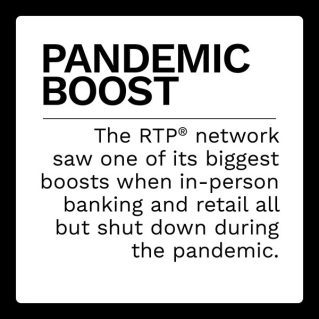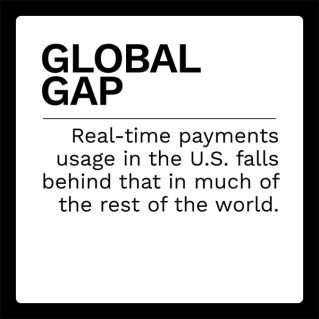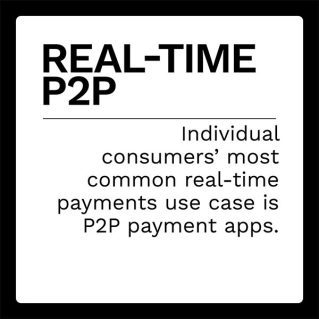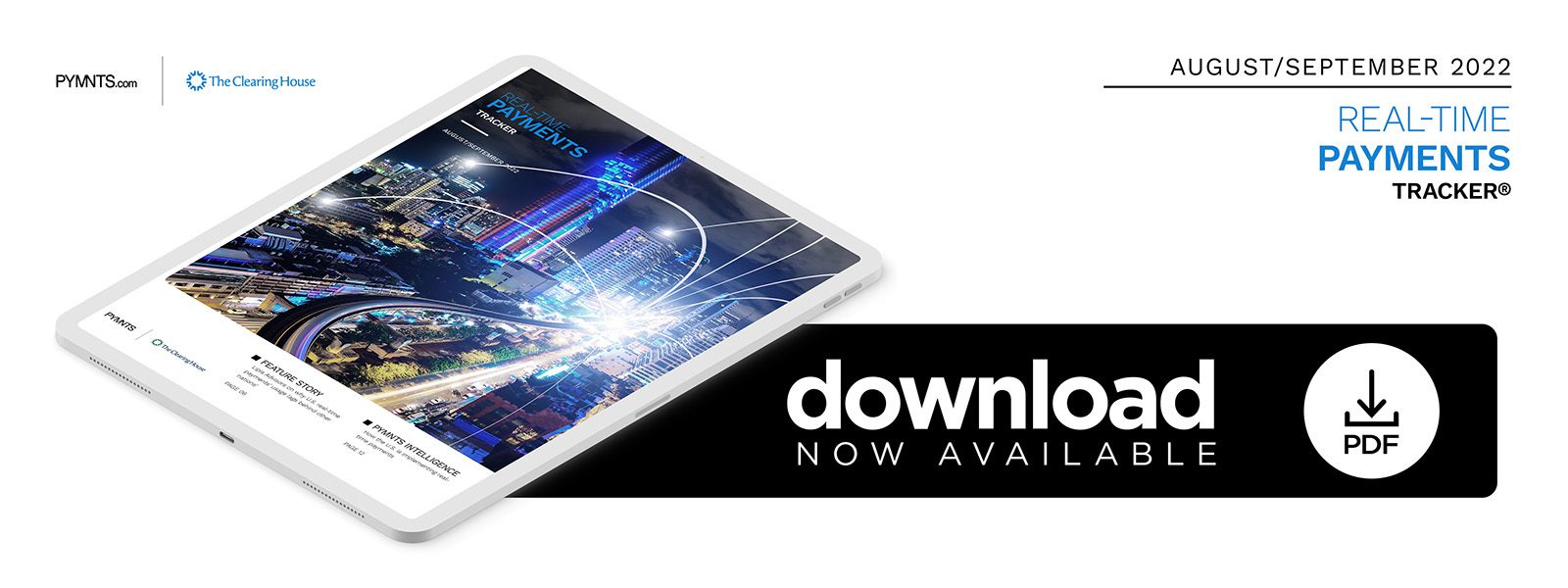US Banks and Businesses Play Real-Time Payments Catch Up

Real-time payments have become popular in the United States in recent years, especially for businesses that transact large sums with other major corporations. Fifty-three percent of U.S. businesses said cash flow management improves when transmitting real-time payments, for example, and 33% reported improved transparency in their payment processes.
The U.S. is just one of 60 countries with a real-time payments infrastructure, and real-time payment usage statistics contrast sharply with the U.S. China saw 18.5 billion real-time transactions in 2021, for example, resulting in an estimated $15.4 billion in cost savings for consumers and businesses in the country. The U.S. recorded 1.8 billion transactions in 2021 for a total cost savings of $648 million. This indicates much more enthusiasm for real-time payments in China, which could translate into a stronger economic presence on the world stage.
This edition of the “Real-Time Payments Tracker®” examines the varying use cases of real-time payments in the U.S. and abroad. It also explores how real-time payments have evolved in the past several years and what businesses can do to encourage their growth in the future.
Around the Real-Time Payments Space
 Real-time payments are responsible for economic growth all over the world, and there are few places this is more apparent than in Nigeria. The country recorded $3.2 billion in economic growth in 2021, thanks to real-time payments, with experts projecting that this figure will hit $6 billion by 2026. Nigeria experienced 3.7 billion real-time transactions last year, making its real-time payments market the sixth largest in the world, behind India, China, Thailand, Brazil and South Korea. 2026 is expected to see 8.8 billion real-time payments in Nigeria, representing a compound annual growth rate (CAGR) of 18.6%.
Real-time payments are responsible for economic growth all over the world, and there are few places this is more apparent than in Nigeria. The country recorded $3.2 billion in economic growth in 2021, thanks to real-time payments, with experts projecting that this figure will hit $6 billion by 2026. Nigeria experienced 3.7 billion real-time transactions last year, making its real-time payments market the sixth largest in the world, behind India, China, Thailand, Brazil and South Korea. 2026 is expected to see 8.8 billion real-time payments in Nigeria, representing a compound annual growth rate (CAGR) of 18.6%.
Banks across the U.S. are developing and implementing use cases for the RTP® network to cater to a variety of customer needs. One example comes from U.S. Bank, which recently leveraged the network to launch a new loan program for auto dealers. The RTP network allows the bank to transfer the funds immediately after the loan agreement is signed, as opposed to the several days it took for funding to be available under legacy systems. These instant payments can, in turn, help auto dealers gain a competitive edge in their industry, as their funds will be available for use instantaneously.
For more on these and other stories, visit the Tracker’s News and Trends section.
Lipis Advisors on Why U.S. Real-Time Payments Have Lagged Behind Other Nations
Real-time payments were long overdue when they debuted in the U.S., with the pandemic giving them a major boost when banks and businesses shut down temporarily. Real-time payments usage in the U.S. falls behind that in much of the rest of the world, however.
In this month’s Feature Story, Leo Lipis, chief executive officer of payments industry consulting group Lipis Advisors, details why other countries see more real-time payments and how the U.S. can encourage greater usage of the payment method.
How the U.S. is Implementing Real-Time Payments
Quick and accurate payments are critical in the modern economy for consumers and businesses, but both groups relied largely on legacy systems such as wire transfers and paper checks until recently. The launch of TCH’s RTP network was heralded as a game-changer in the payments world, but its use is still common among a minority of businesses, in stark contrast with much of the rest of the world.
This month, PYMNTS Intelligence examines the growth of the RTP network in the U.S. and how it compares to its peers around the globe.
About the Tracker
The “Real-Time Payments Tracker®,” a PYMNTS and The Clearing House collaboration, examines the varying use cases of real-time payments in the U.S. and abroad. It also explores how real-time payments have evolved over the past several years and what businesses can do to encourage their growth in the future.

